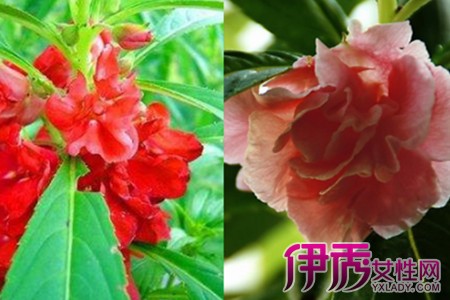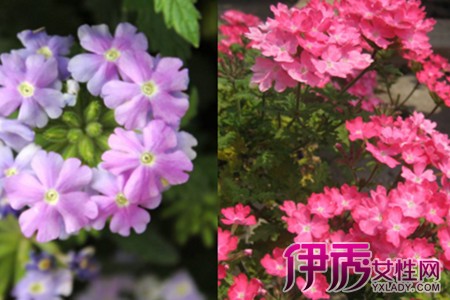Choose a kind of carnation to grow an avatar of love and respect.

Every year on Mother's Day, we are always inseparable from carnations. This small bouquet of flowers represents our love and gratitude for our mother and expresses the purest love in the world. But there is always a time for fresh cut flowers to wither. Are you a little unbearable to see a flower die? The editor has brought you a way to grow carnations at home today. You only need to follow the editor's method to plant a carnation full of vitality in your home.
To plant a plant well, we must first understand its living habits. Our protagonist Carnation likes to live in a cool, ventilated and light environment. Generally speaking, a temperature of more than 30 degrees will make it impossible for it to survive well. And the soil is also required to be loose and fertilized, so that it can grow healthily and healthily. Therefore, the editor here brings you the following suggestions.
Beginners grow carnations, sowing is not recommended, you can go to the local flower and bird market to buy favorite varieties, or the use of omnipotent treasure is also a good choice. Heavy soil is recommended for planting, and if conditions permit, flowerpots should use pottery pots with good ventilation. When your carnation is planted, proper care can make it thrive.
As long as we strictly follow the growth habits of carnations, we will be able to work out a complete and comprehensive nursing plan. Nursing them is like caring for a child, which needs to be treated carefully. Watering, lighting, fertilization and heart-picking are all essential work. The editor has prepared a few notes for you here.
After your carnation is planted, you need to water it once a day. Pay attention to the moisture of the soil. It is neither too dry nor too waterlogged. Fertilizer can be bought in a treasure, but do not apply thick fertilizer, because too thick fertilizer can easily lead to the burning of carnations. When your carnation baby has six or seven lateral buds, you can consider picking the heart, which will ensure that it has a beautiful shape and looks more pleasing to the eye.
Planting method of Carnation seed
Carnation can be reproduced by seed planting, carnation seed planting, the key must be to select good seeds, high-quality seeds are more conducive to improve the germination rate, the following arrangement of carnation seed planting methods and steps.
Seed planting method of Carnation 1. Seed selection
Choose healthy seeds free of diseases and insect pests. The quality of the seeds directly affects the germination rate of carnations. In addition, the seeds of carnations are very slight and can be easily blown away, so pay attention to collection and preservation.
Carnation seeds need to be soaked in soaking solution for 2 hours before planting, which is beneficial to seed germination.
2. Selection of basin soil
After selecting the seeds, you need to prepare a flowerpot for sowing, requiring the basin to have a running hole and strong air permeability. When sowing, sprinkle some ceramsite at the bottom of the basin to improve water permeability, and then lay a layer of cultural soil on top of the ceramsite.
The soil generally chooses loose, breathable sand.
3. Planting mode
Flower friends can sprinkle the seeds directly on the soil and sprinkle a layer of fine soil on the seed surface after planting to prevent the seeds from being blown away while watering to keep the soil moist.
4. Post-planting maintenance
After sowing, flower friends can move the flowerpot to a ventilated and bright place, while avoiding direct sunlight.
After the conservation species, you can often spray some water to keep the environment soil moist, after a period of time the seeds can take root and sprout, usually about a week will sprout.
5. Build a bracket
When the young plant of the carnation grows to a certain height, it needs to build a small bracket to prevent the plant from staggering. In the process of cultivation, it is necessary to prevent the overgrowth of plants, otherwise it will reduce the ornamental value of carnations.
In the process of cultivation, in addition to building a frame for the plant, it is also necessary to maintain the soil moisture and nutrient supply, and to get proper light, and wait for the plant to return to normal growth, the flower friends will patiently wait for the cultivated carnation to blossom.
How to grow carnations, the method of growing carnations
Carnations have higher requirements for planting techniques. When planting, we should first pay attention to the cultivation substrate, the field cultivated soil requires to maintain a certain permeability, and a large amount of organic fertilizer must be applied to make the soil loose, fertile and reach a certain porosity. Then the land is leveled and bedded in preparation for planting, so how can carnations be planted? The following is to introduce the planting methods of carnations.
Planting method of carnation
1. Soil: clayey soil that requires good drainage, rich humus, good fertilizer retention and slightly alkaline.
2. Watering: carnations grow strongly and are more resistant to drought. In rainy and wet areas, the soil is easy to harden and the root system develops abnormally due to poor ventilation, so attention should be paid to loosening the soil and drainage in the rainy season. Except for timely watering during the growing and blooming season. Usually less watering, in order to keep the soil moist. The air wettability should be kept at about 75%, and proper spraying of water before flowering can prevent the bud from cracking in advance.
3. Fertilization: carnations like fertilizer, apply sufficient amount of baking fertilizer and bone meal before planting, and apply liquid fertilizer continuously during the growing period, generally applying mature thin fertilizer and water every 10 days or so, and applying topdressing after flower picking.
4. Pest control: there are many diseases and insect pests in carnations, especially diseases, such as blight, virus, leaf spot, rust and so on. In order to prevent diseases, disease-free cuttings and virus-free seedlings after tissue culture should be selected. If diseased plants are found in the seedling stage, the diseased plants must be removed, sprayed and soil disinfected, etc. Pests are mainly red spiders, aphids, burglar moths, mole crickets and so on, which can be sprayed or trapped.
5. Other: in order to promote multi-branch and multi-flowering of carnation, it is necessary to pick the heart many times from the seedling stage: when the seedlings grow 8 to 9 pairs of leaves, carry out the first coring and retain 4 pairs of leaves; when the lateral branches grow more than 4 pairs of leaves, for the second time, keep 4 pairs of leaves on each side branch, and finally make the whole plant have 12 pairs of 15 lateral branches.
There is only one bud at the top of each side branch during bud pregnancy, and the budding buds and lateral branches in the axils below the top should be removed in time. Cut off the peduncle in time after the first flowering, leaving only two buds at the base of each branch. After picking the heart again and again, it can make the plant shape beautiful and the flowers colorful.
Warm reminder: the preference for strong light is an important characteristic of carnations, whether indoor, potted over summer or greenhouse to promote cultivation, all need sufficient light, should be placed in the sunny position of direct light.
These are the main contents of the article on how to grow carnations and the planting methods of carnations. When the plants grow to a height of about 20 centimeters after planting, too many lateral buds should be peeled off. Generally, the first bud peeling is carried out in July, and the second bud peeling and pruning is carried out in September. The number of buds left when peeling buds depends on the strength of plant growth, and 6-7 basal lateral buds are generally retained. After two times of bud peeling and pruning, the plant was stereotyped.
- Prev

Learn how to plant impatiens to make domestic flowers colorful
Impatiens flowers are so beautiful that many people want to grow them in their own homes. However, the bought impatiens rarely last long, so these friends are very interested in knowing if the impatiens can be planted by themselves. Today, we will talk about how to plant impatiens.
- Next

Learn the planting method of cherry seeds to let the beautiful women in the family reproduce more.
Sakura is a very beautiful flower. Many people want to plant more and more cherry trees. But I don't know what to do to reproduce. Today we're going to tell you about the seed planting methods of Sakura.
Related
- Fuxing push coffee new agricultural production and marketing class: lack of small-scale processing plants
- Jujube rice field leisure farm deep ploughing Yilan for five years to create a space for organic food and play
- Nongyu Farm-A trial of organic papaya for brave women with advanced technology
- Four points for attention in the prevention and control of diseases and insect pests of edible fungi
- How to add nutrient solution to Edible Fungi
- Is there any good way to control edible fungus mites?
- Open Inoculation Technology of Edible Fungi
- Is there any clever way to use fertilizer for edible fungus in winter?
- What agents are used to kill the pathogens of edible fungi in the mushroom shed?
- Rapid drying of Edible Fungi

